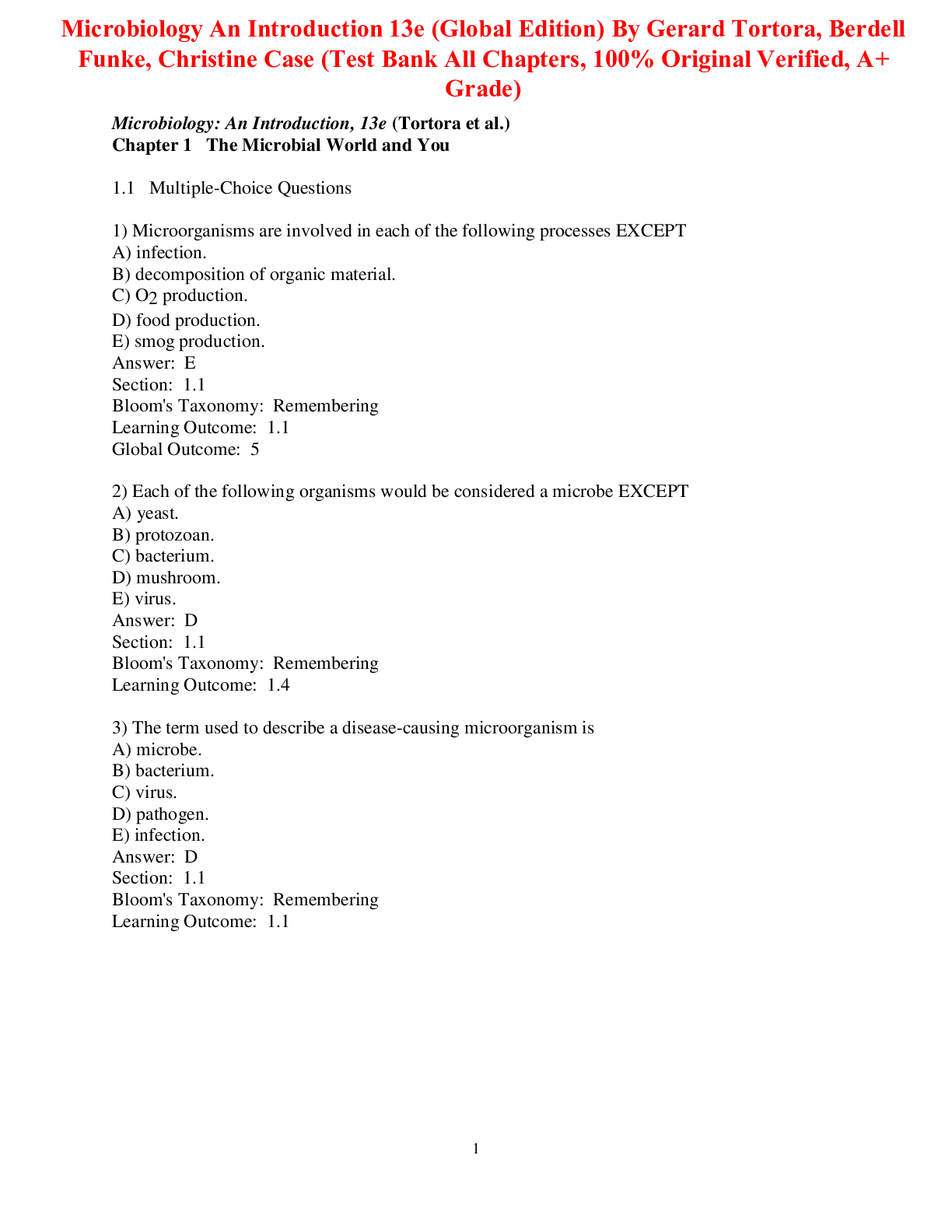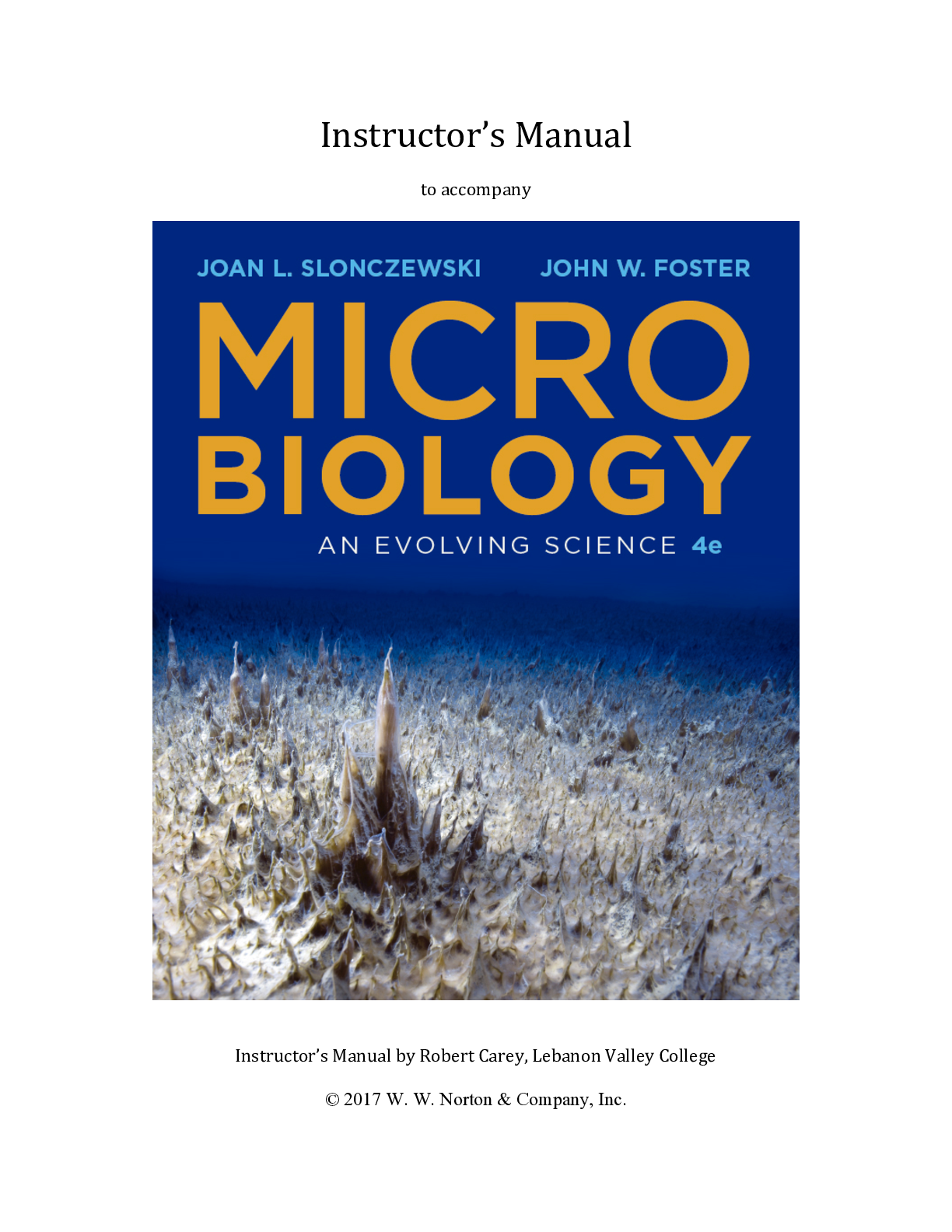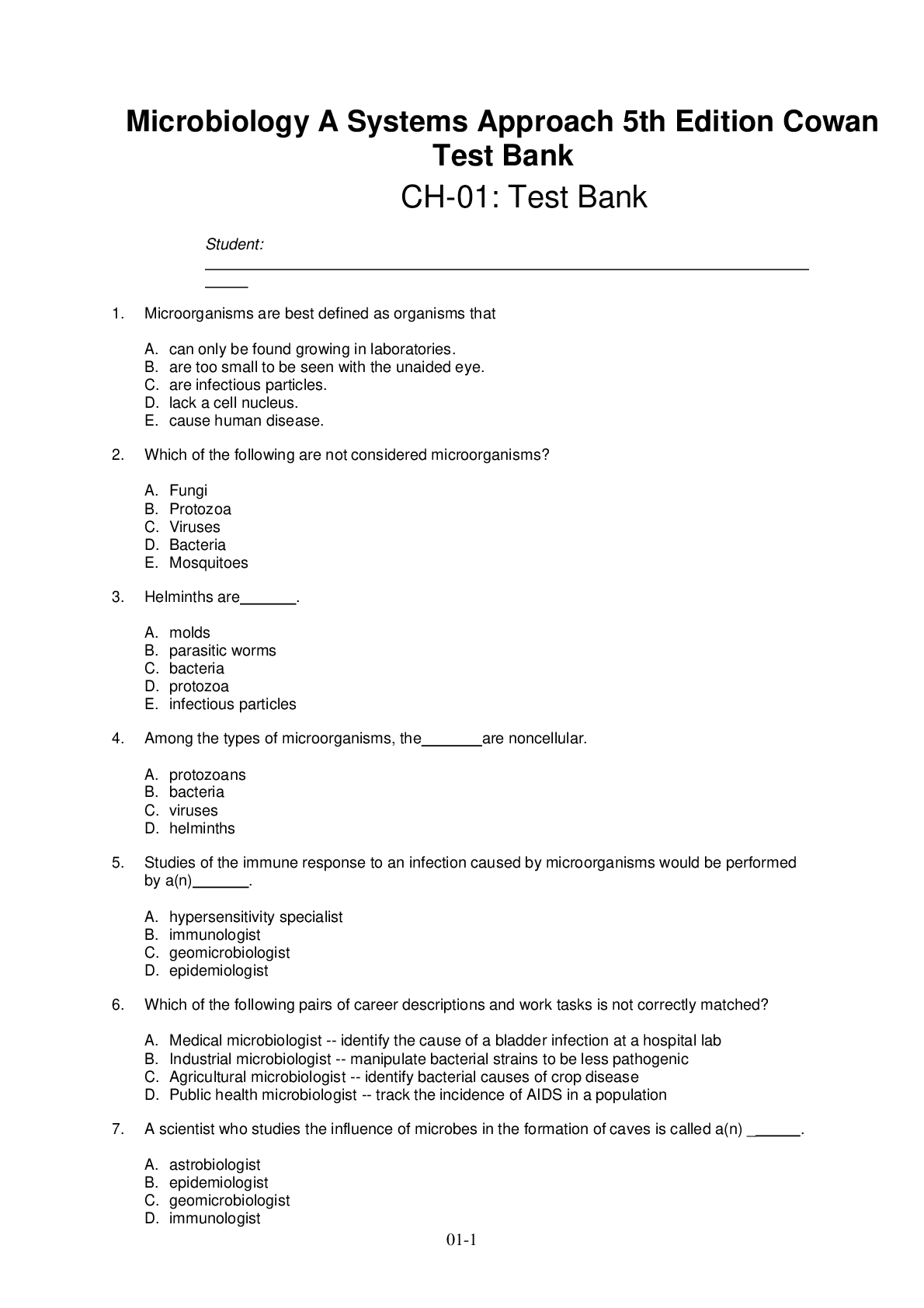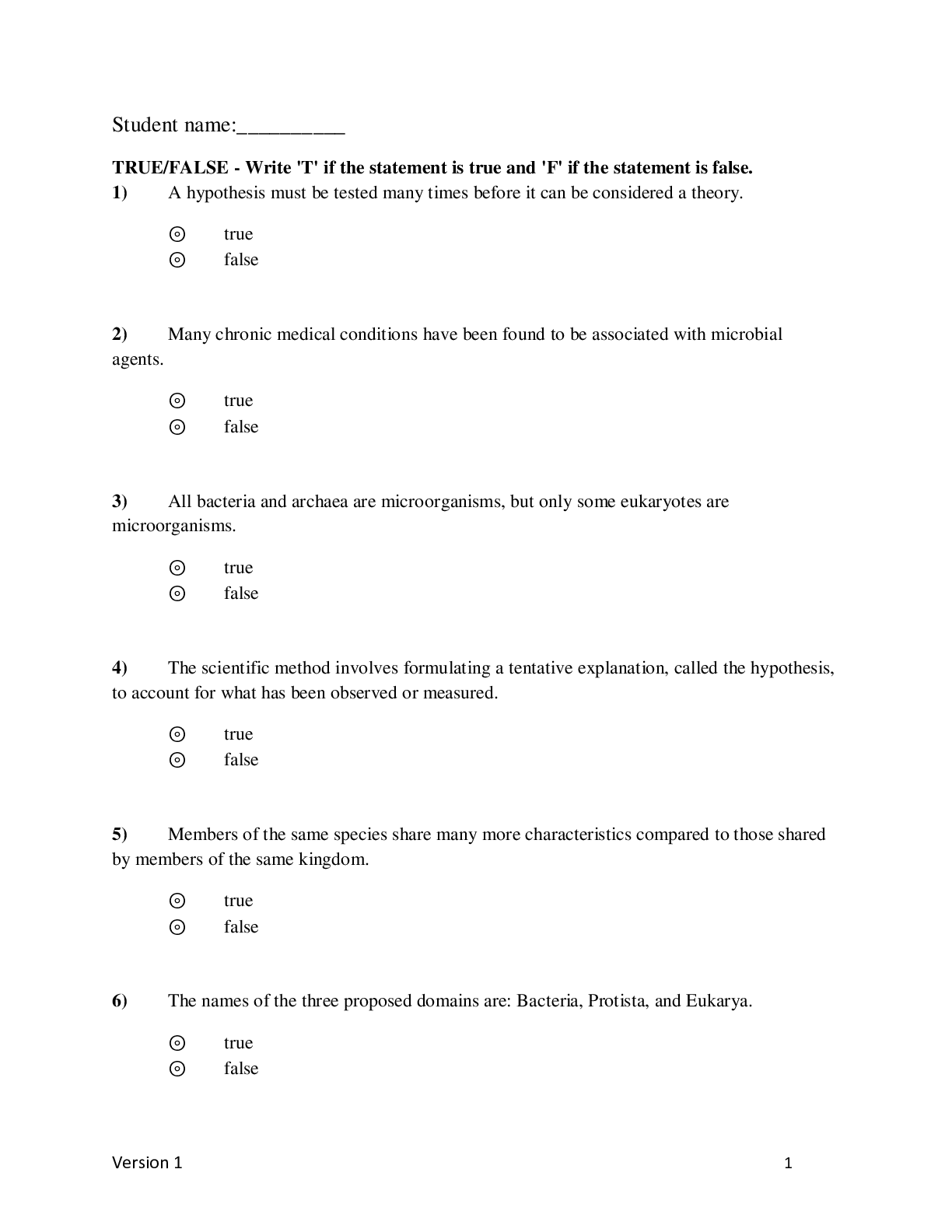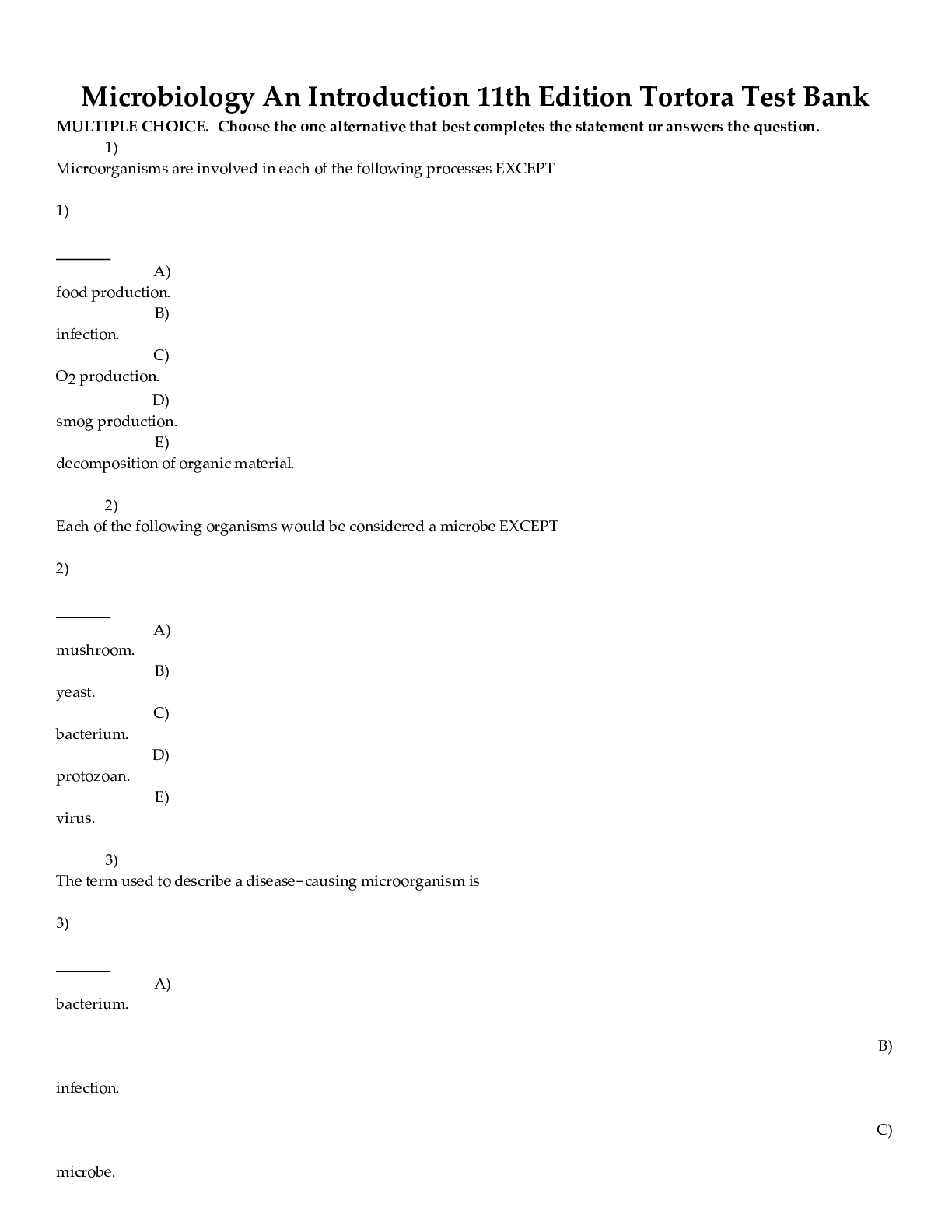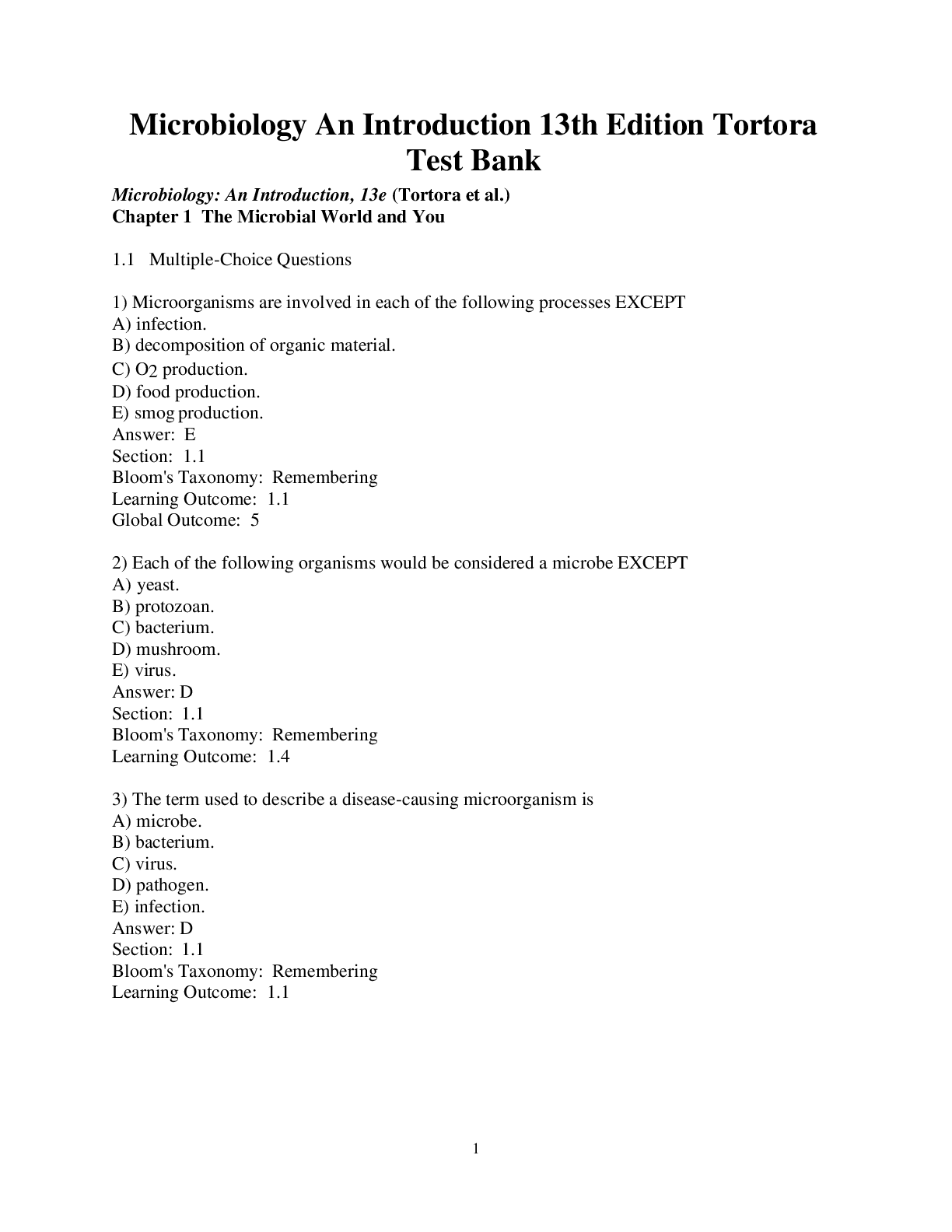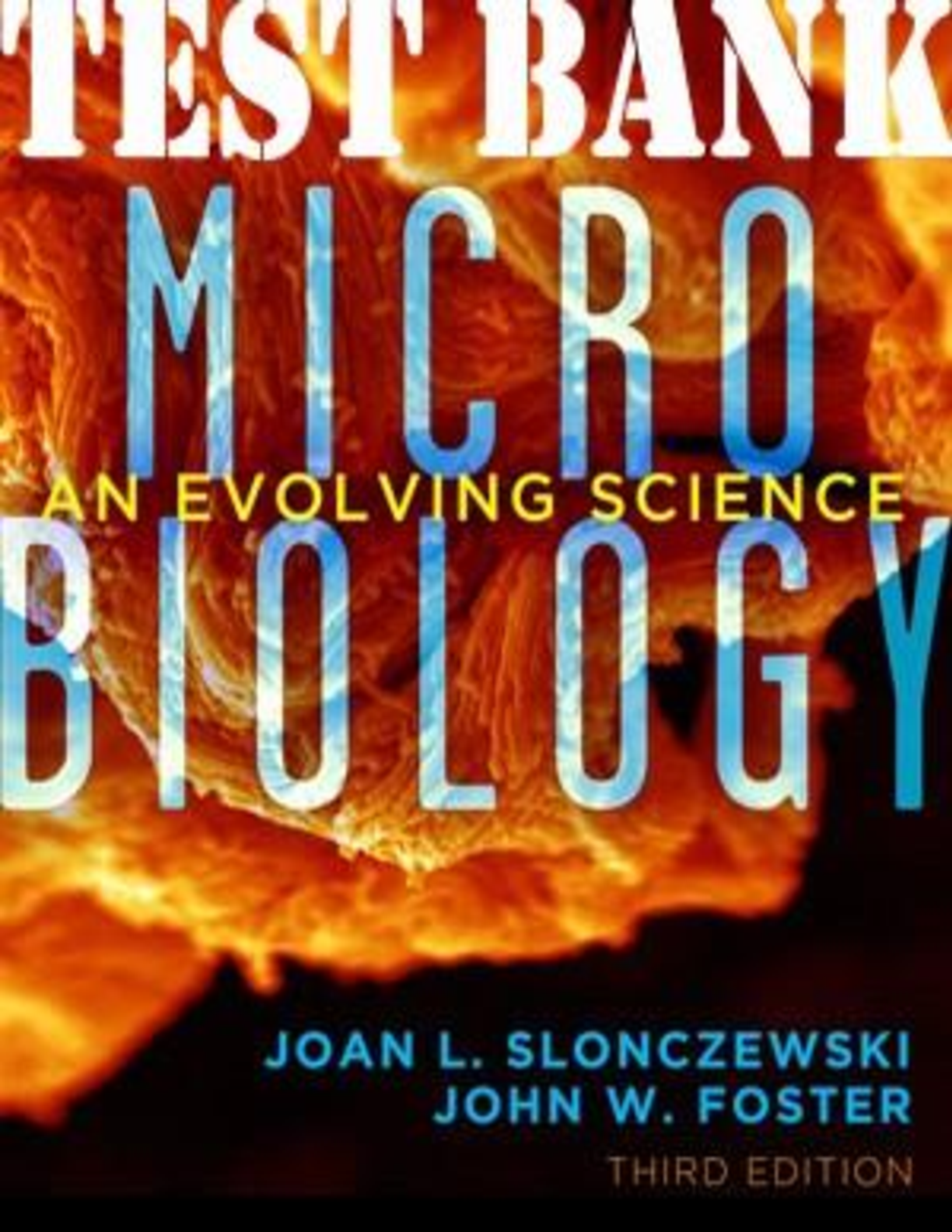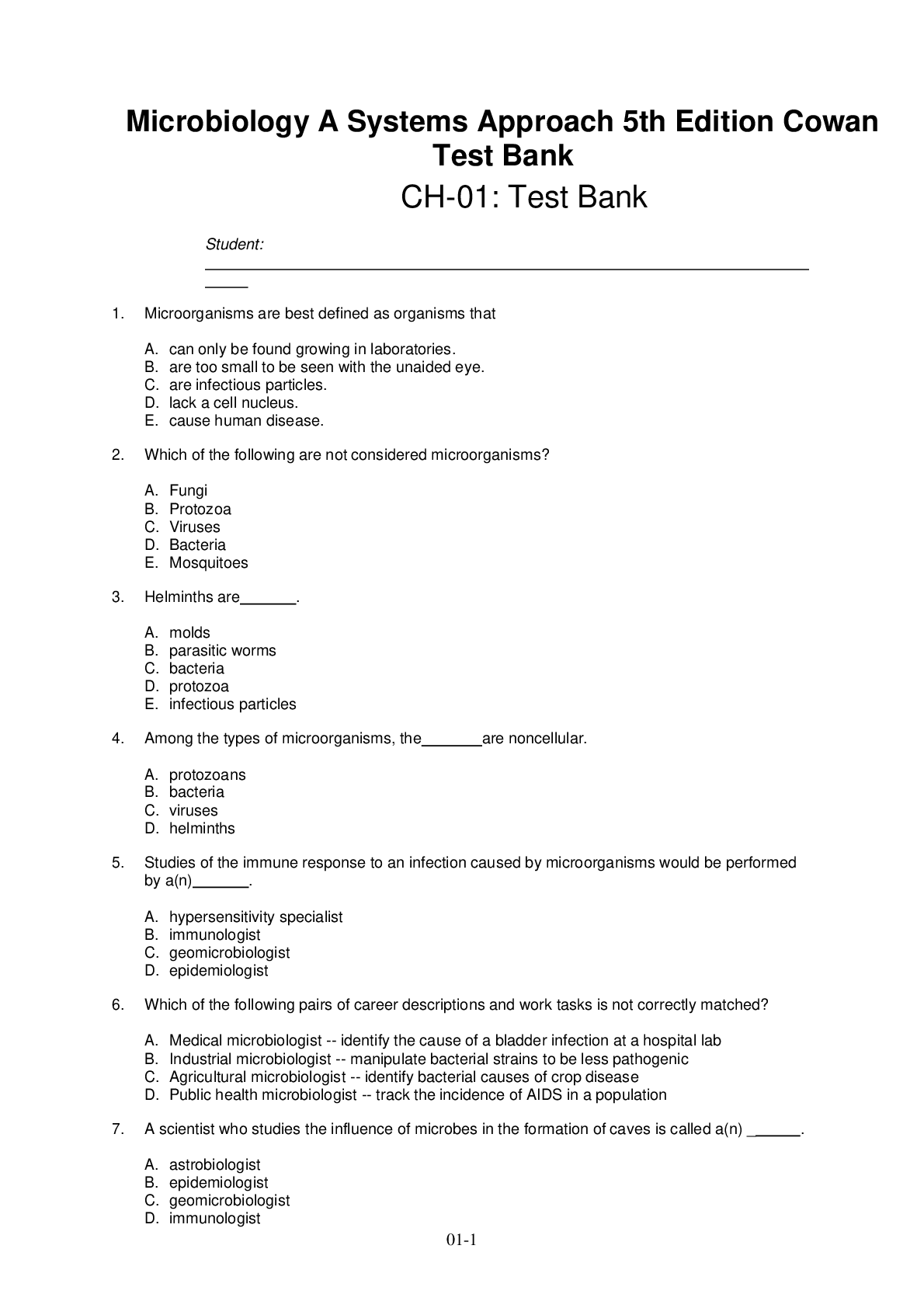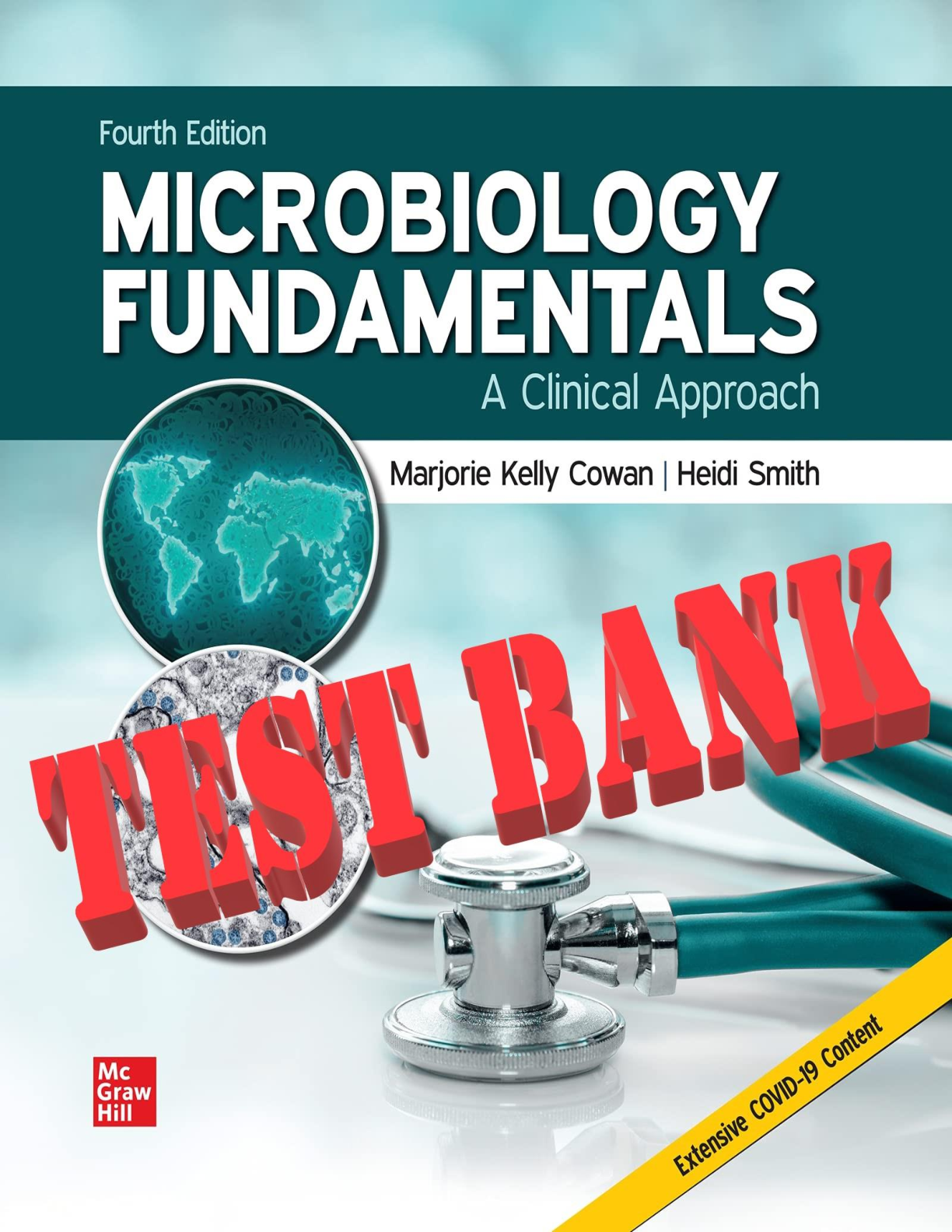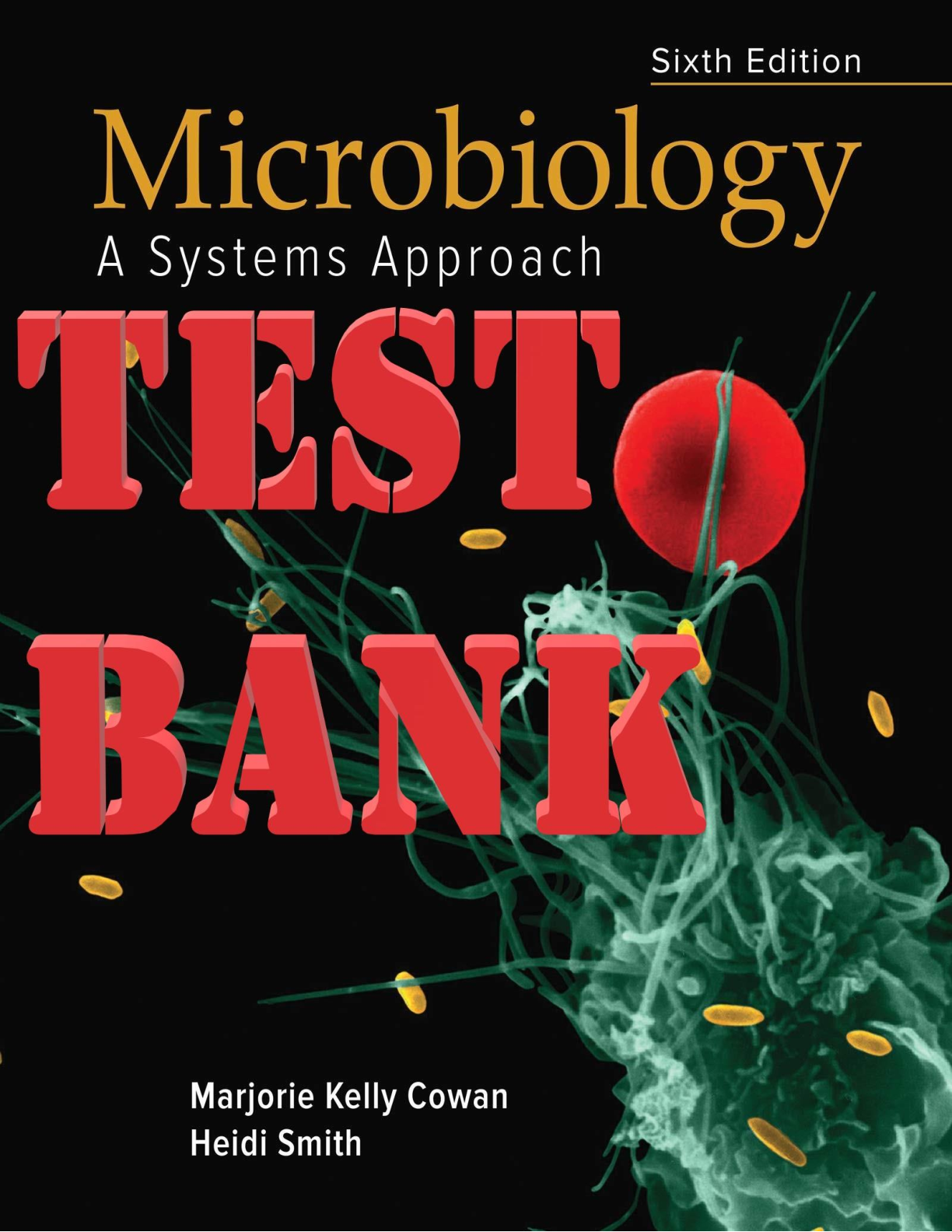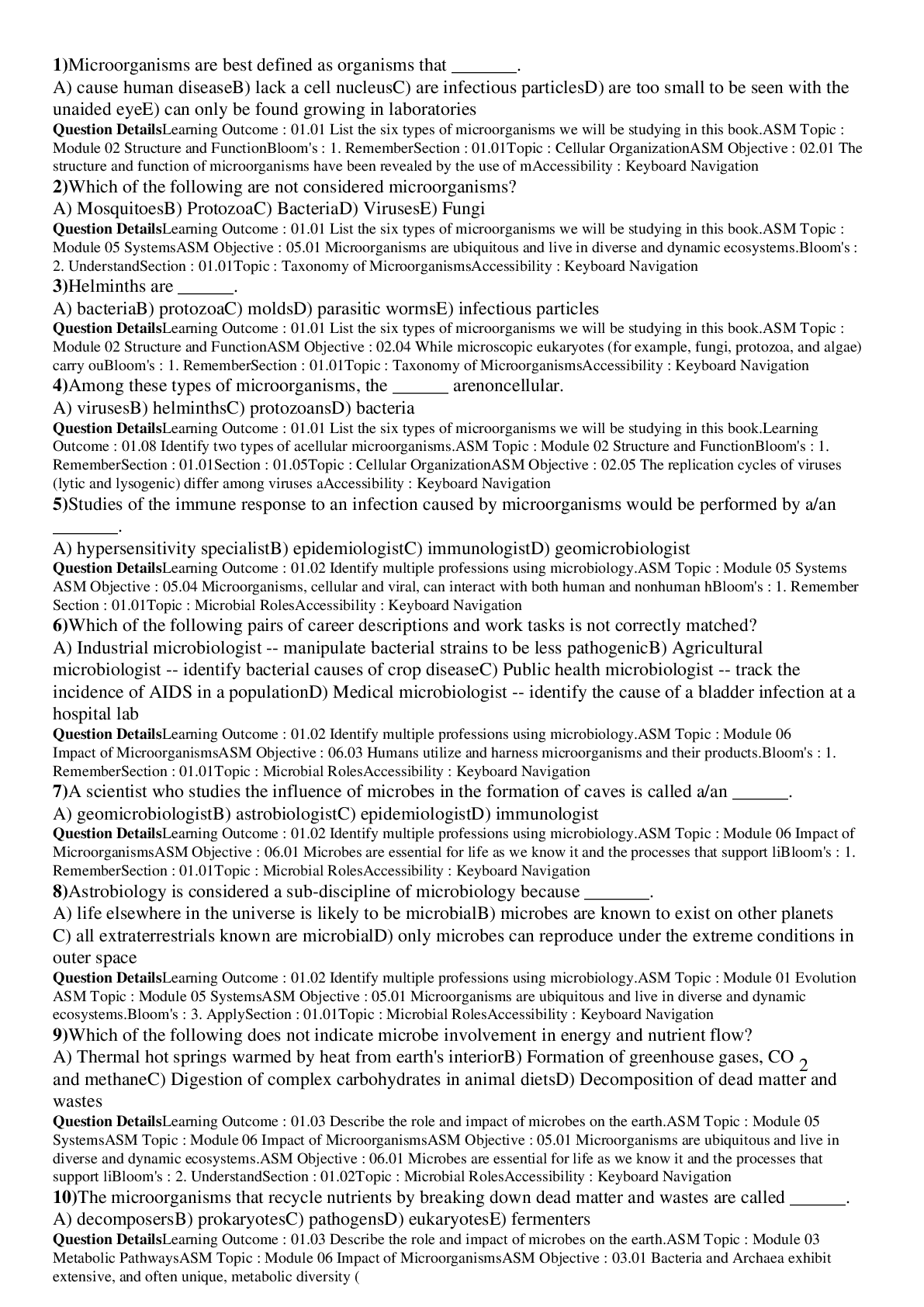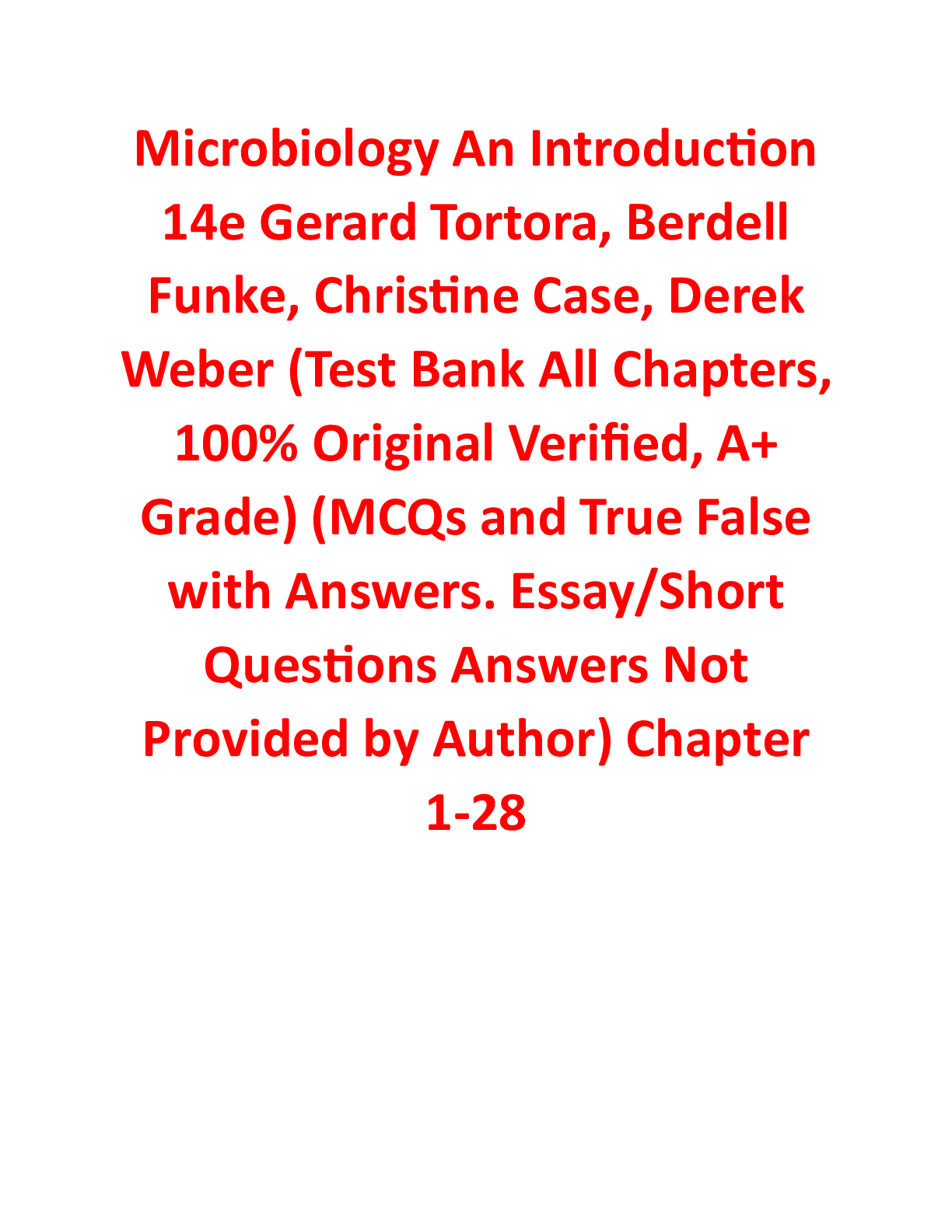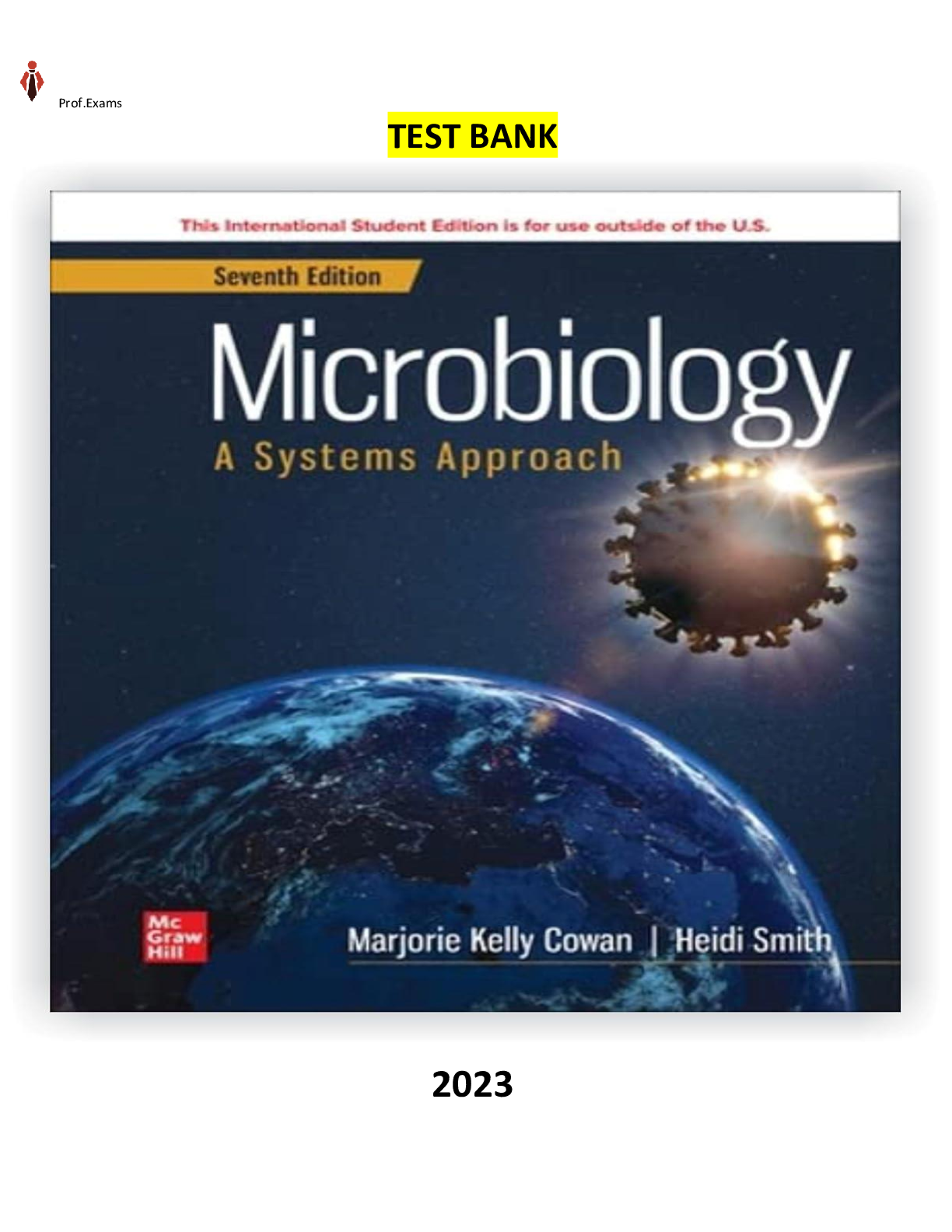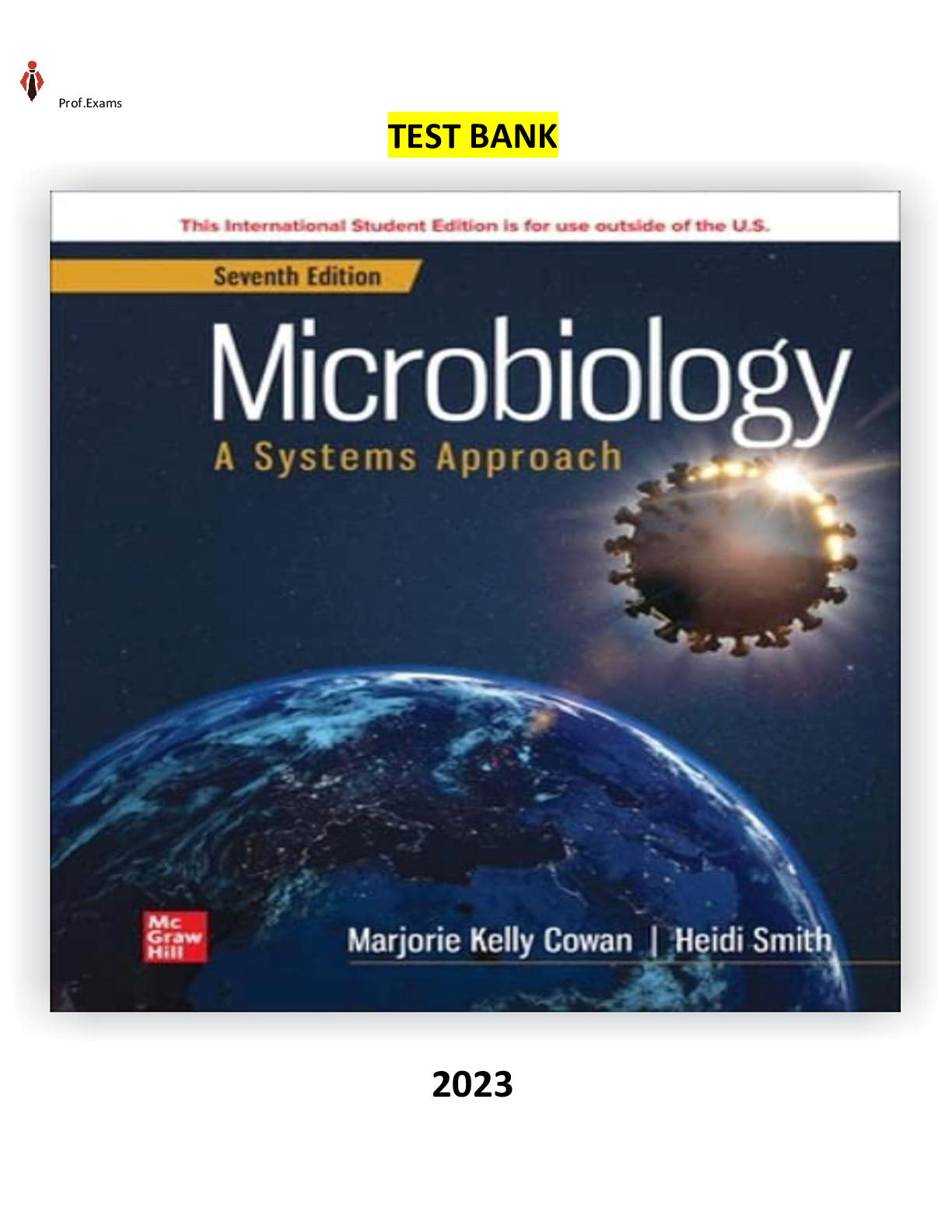Biology > TEST BANK > Test Bank for Microbiology A Systems Approach 3rd Edition by Marjorie Kelly Cowan (All)
Test Bank for Microbiology A Systems Approach 3rd Edition by Marjorie Kelly Cowan
Document Content and Description Below
Chapter 002 The Chemistry of Biology Multiple Choice Questions 1. Anything that occupies space and has mass is called A. Atomic B. Living C. Matter D. Energy E. Space 2. The electrons of an at... om are A. Always equal to the number of neutrons in an atom B. Found in the nucleus C. Used to determine atomic number D. Positively charged E. Moving in pathways called orbitals 3. The electrons of an atom are A. Always equal to the number of protons B. Used to determine the atomic weight C. Carrying a positive charge D. Used to determine the atomic number E. Always in full orbitals 4. All of the following pertain to the atom carbon-14 except A. Has 6 protons B. Has 6 electrons C. Has 14 neutrons D. Is an isotope of carbon E. All of the choices pertain to carbon-14 5. The subatomic particles that surround the nucleus are the A. Electrons B. Protons C. Neutrons D. Protons and neutrons E. Protons and electrons 6. Isotopes are atoms of the same element that differ in their A. Neutron number B. Electron number C. Proton number D. Atomic number E. Chemical properties 7. What is the maximum number of electrons in the second energy shell of an atom? A. 2 B. 4 C. 8 D. 18 E. 32 8. What is the maximum number of electrons in the first energy shell of an atom? A. 2 B. 4 C. 8 D. 18 E. 32 9. Protons and neutrons make up the atom's central core referred to as its A. Valence number B. Isotope C. Nucleus D. Center of gravity E. None of the choices are correct 10. The valence number is the A. Number of protons B. Number of neutrons C. Atomic weight D. Number of inner most electrons E. Number of outer most electrons 11. Two or more atoms bonded together are called a/an A. Ion B. Isotope C. Element D. Electrolyte E. Molecule 12. What would be the valence number of electrons in the sulfur (S) atom? A. 2 B. 6 C. 8 D. 16 E. 32 13. Polar molecules are composed of covalently bonded A. Identical atoms B. Carbon atoms C. Ions D. Atoms of different electro negativity E. Atoms of identical electro negativity 14. Polar molecules A. Have an equal charge distribution B. Have an unequal charge distribution C. Are insoluble in water D. Always contain carbon E. Always involve oxygen 15. Covalent bonds A. Result from losing electrons B. Are always polar C. Are always non-polar D. Result from sharing electrons E. Result from gaining electrons 16. Cations are a(n) A. Charged subatomic particles B. Atoms that have gained electrons C. Atoms that have gained neutrons D. Capable of forming ionic bonds with anions E. Atoms without protons 17. A reaction where an electron is lost is called A. Oxidation B. Reduction C. Ionization D. Decomposition E. Dissolution 18. An atom has gained an electron. It has been A. Oxidized B. Reduced C. Ionized D. Deionized E. Neutralized 19. Ionic bonds A. Result from sharing electrons B. Result from transferring electrons C. Results from like charge attraction D. Are the weakest chemical bonds E. Always involve carbon 20. Hydrogen bonds A. Result from attractive forces between molecules with polar covalent bonds B. Result from attractive forces between molecules with polar ionic bonds C. Result from attractive forces between molecules with non-polar covalent bonds D. Result from attractive forces between molecules with non-polar ionic bonds E. Are the strongest bonds between molecules 21. Atoms that gain or lose electrons become charged particles called A. Cations B. Anions C. Ions D. Isotopes E. All of the choices are correct 22. Substances that release ions when dissolved in water and conduct electricity are A. Covalent B. Nonpolar C. Electrons D. Electrolytes E. Solvents 23. Which of the following represents a synthesis reaction? A. AB ® A + B B. A + B ® AB C. AB + XY ® AX + BY D. AB + XY « AX + BY E. None of the choices are correct 24. Which of the following represents a reversible reaction? A. AB ® A + B B. A + B ® AB C. AB + XY ® AX + BY D. AB + XY « AX + BY E. None of the choices are correct 25. The important solvent associated with living things is A. Carbon dioxide B. Sodium chloride C. Ethyl alcohol D. Benzene E. Water 26. Ionic compounds are A. Hydrophobic B. Hydrophilic C. Are acidic in solution D. Are basic in solution E. Always form salts in solution 27. A solution is composed of one or more substances called _____ that are uniformly dispersed in a dissolving medium called a [Show More]
Last updated: 1 year ago
Preview 1 out of 20 pages
.png)
Reviews( 0 )
Document information
Connected school, study & course
About the document
Uploaded On
Nov 03, 2021
Number of pages
20
Written in
Additional information
This document has been written for:
Uploaded
Nov 03, 2021
Downloads
0
Views
106


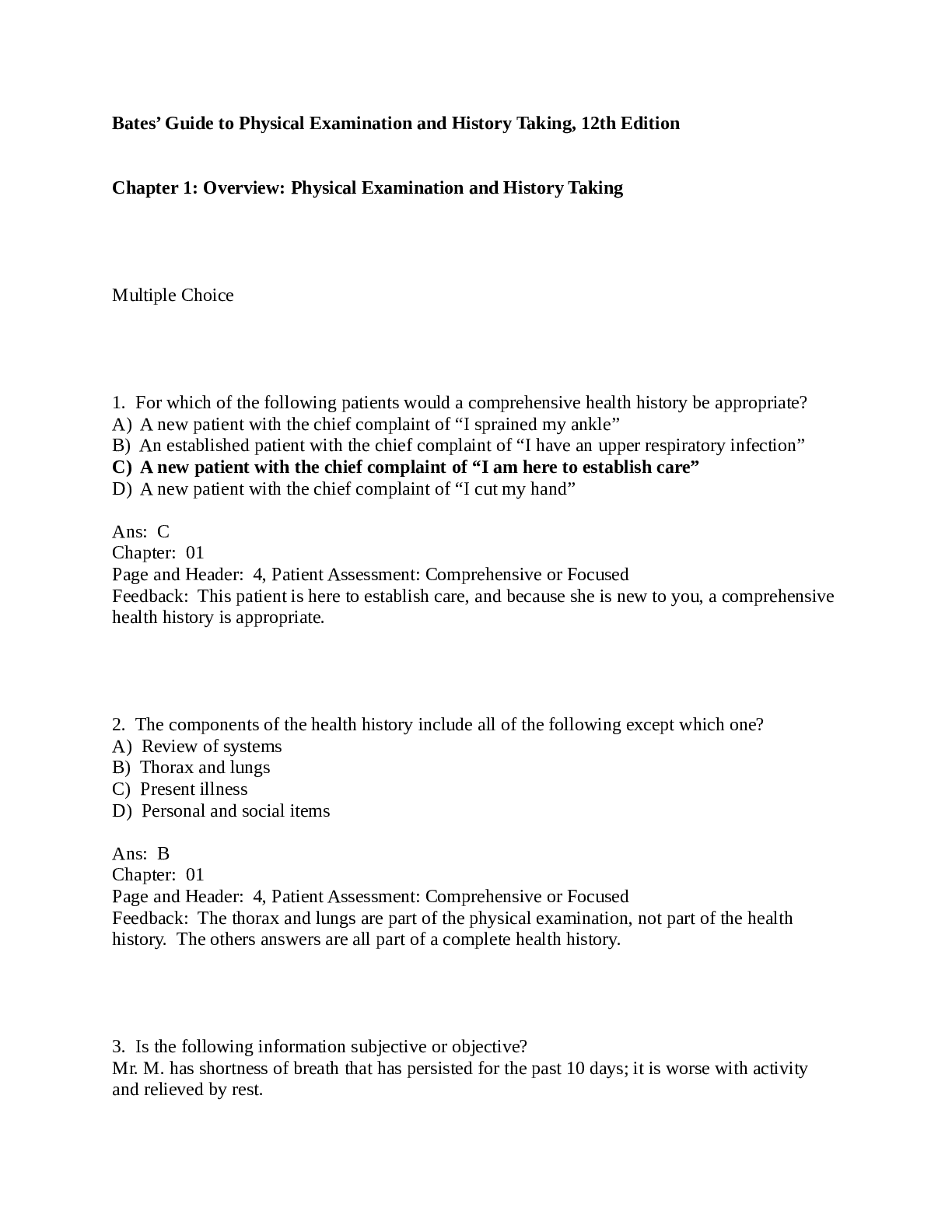
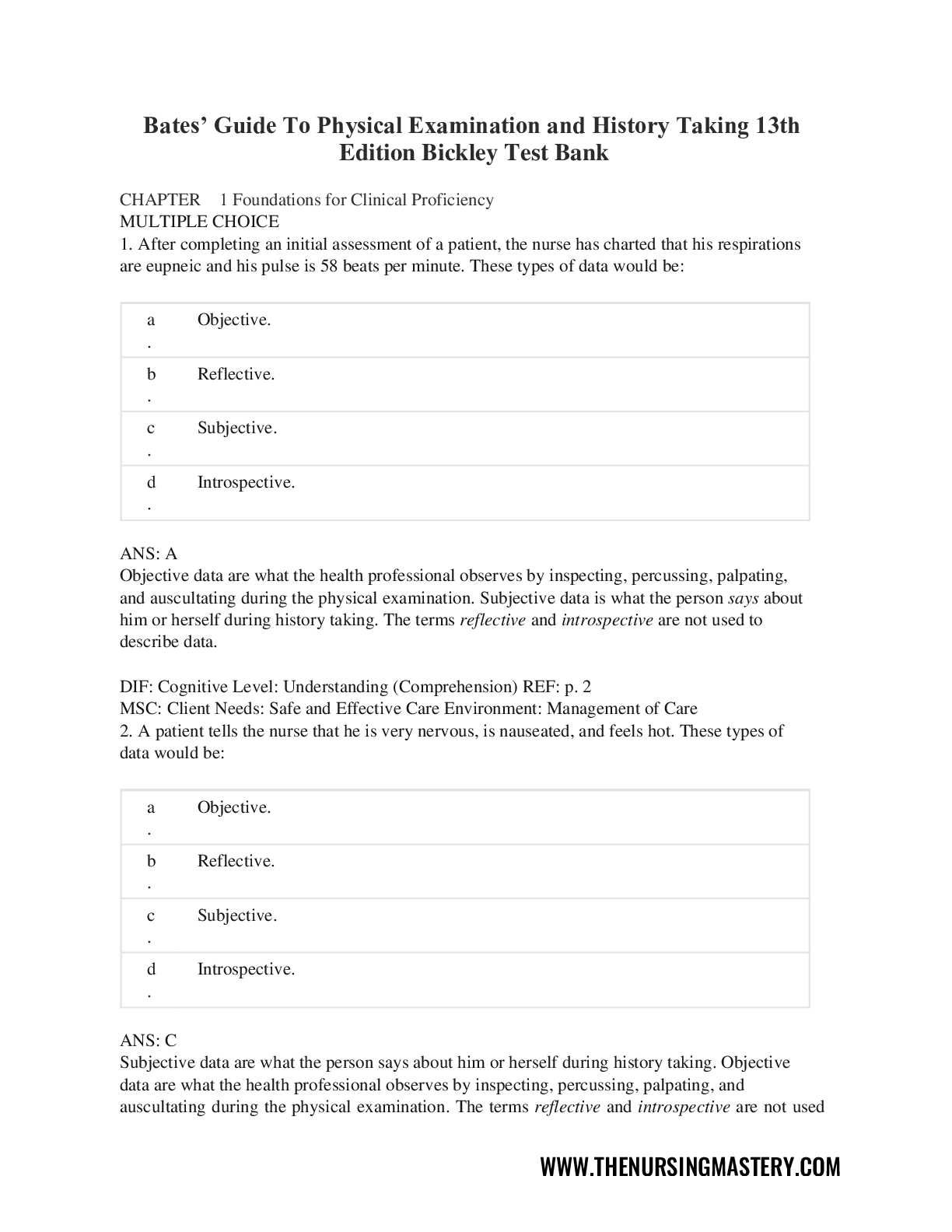
.png)
.png)
.png)

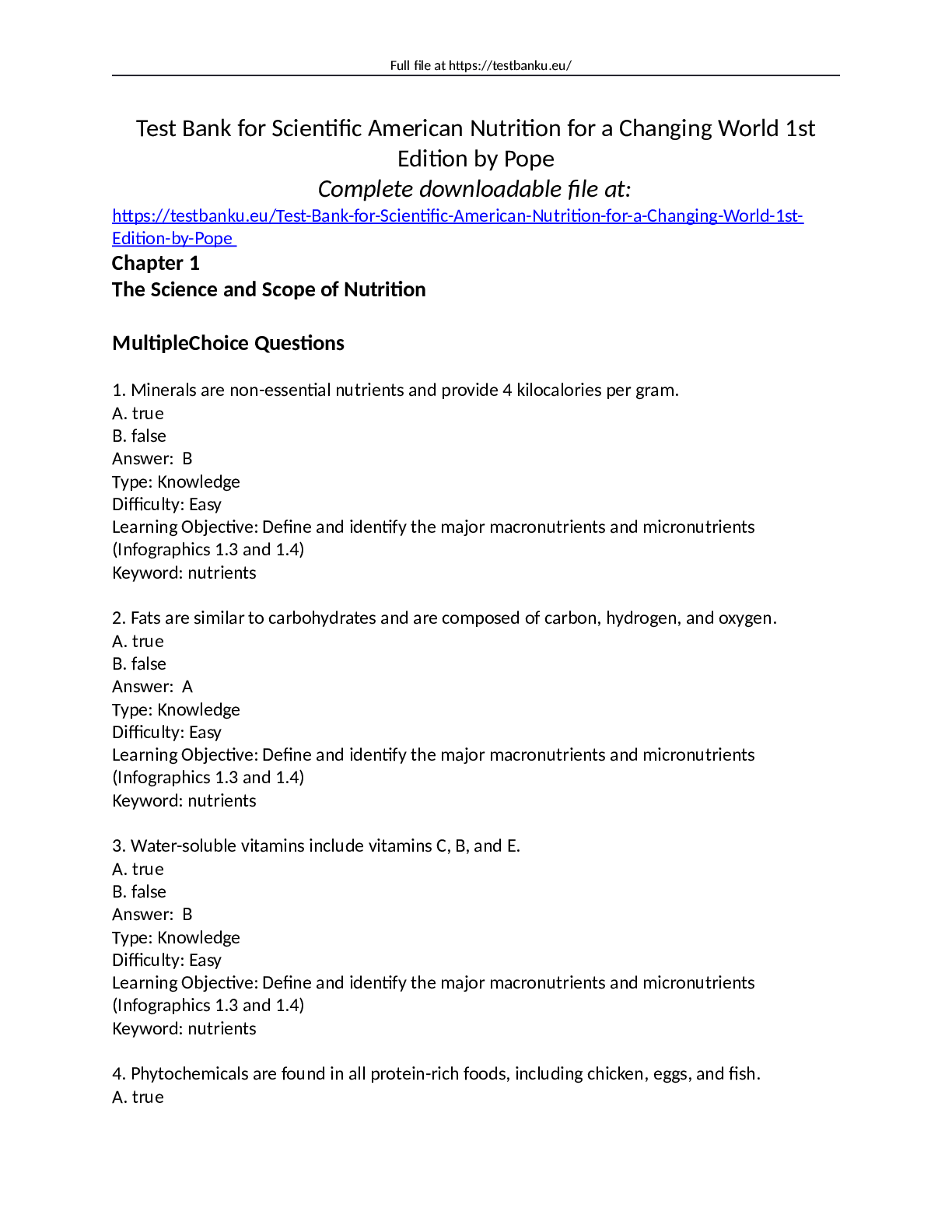
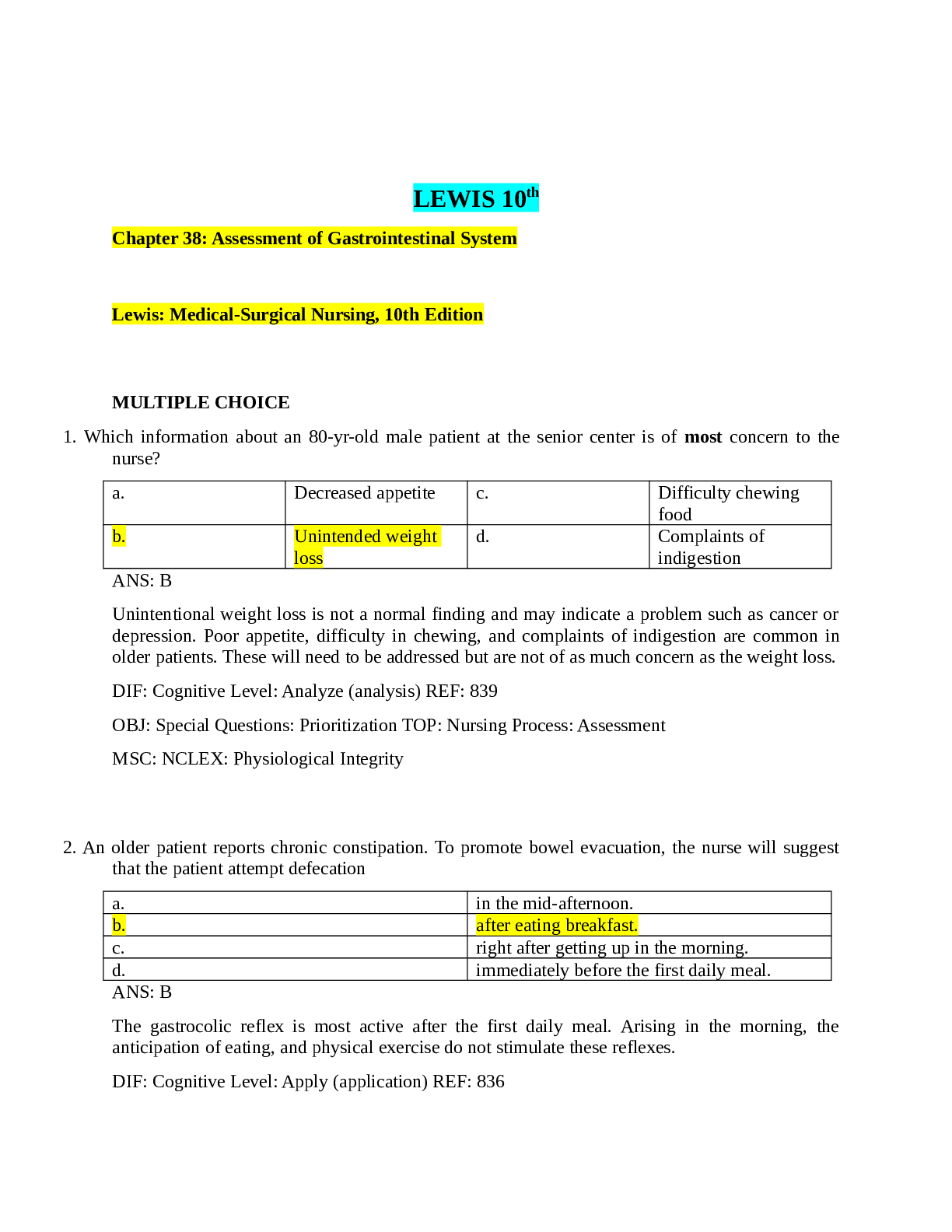

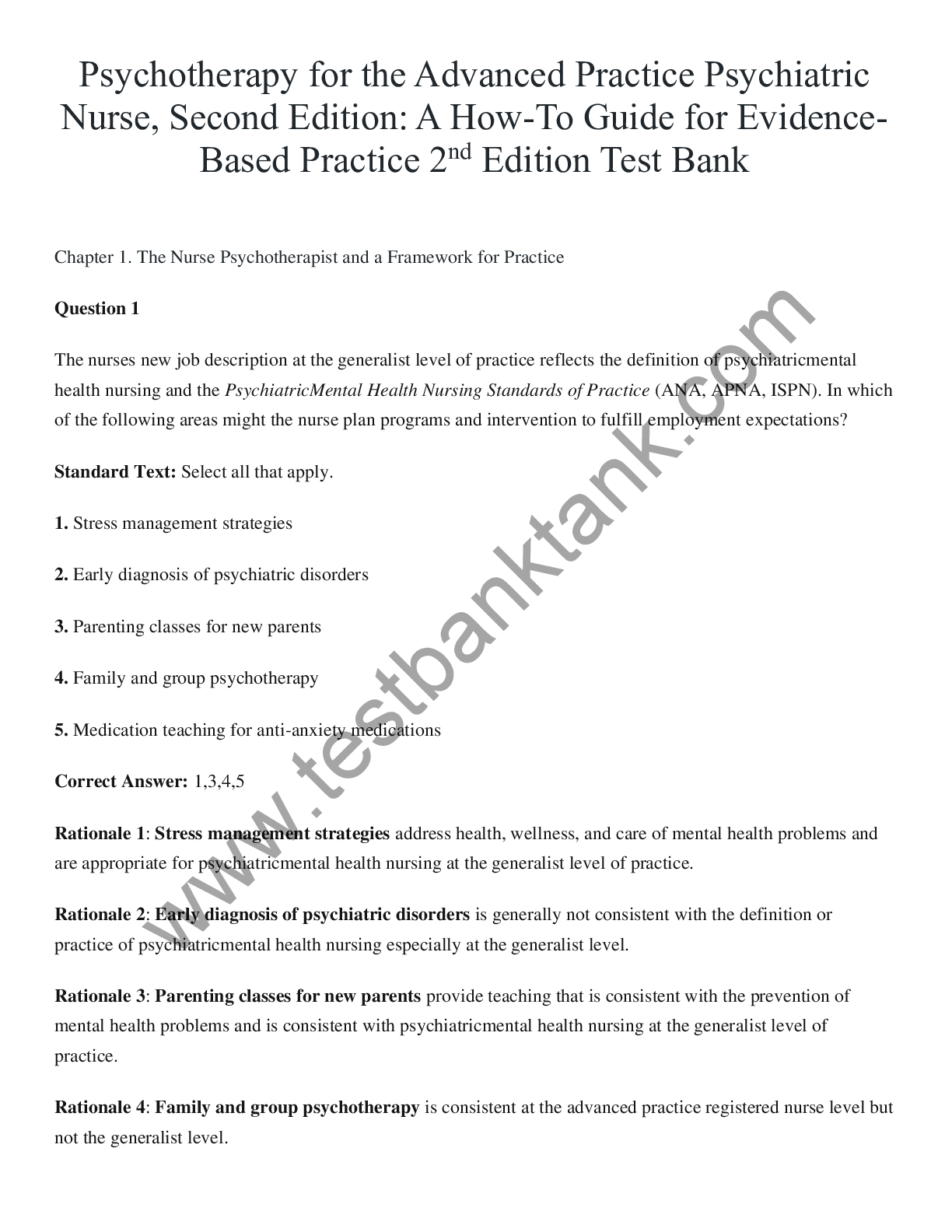
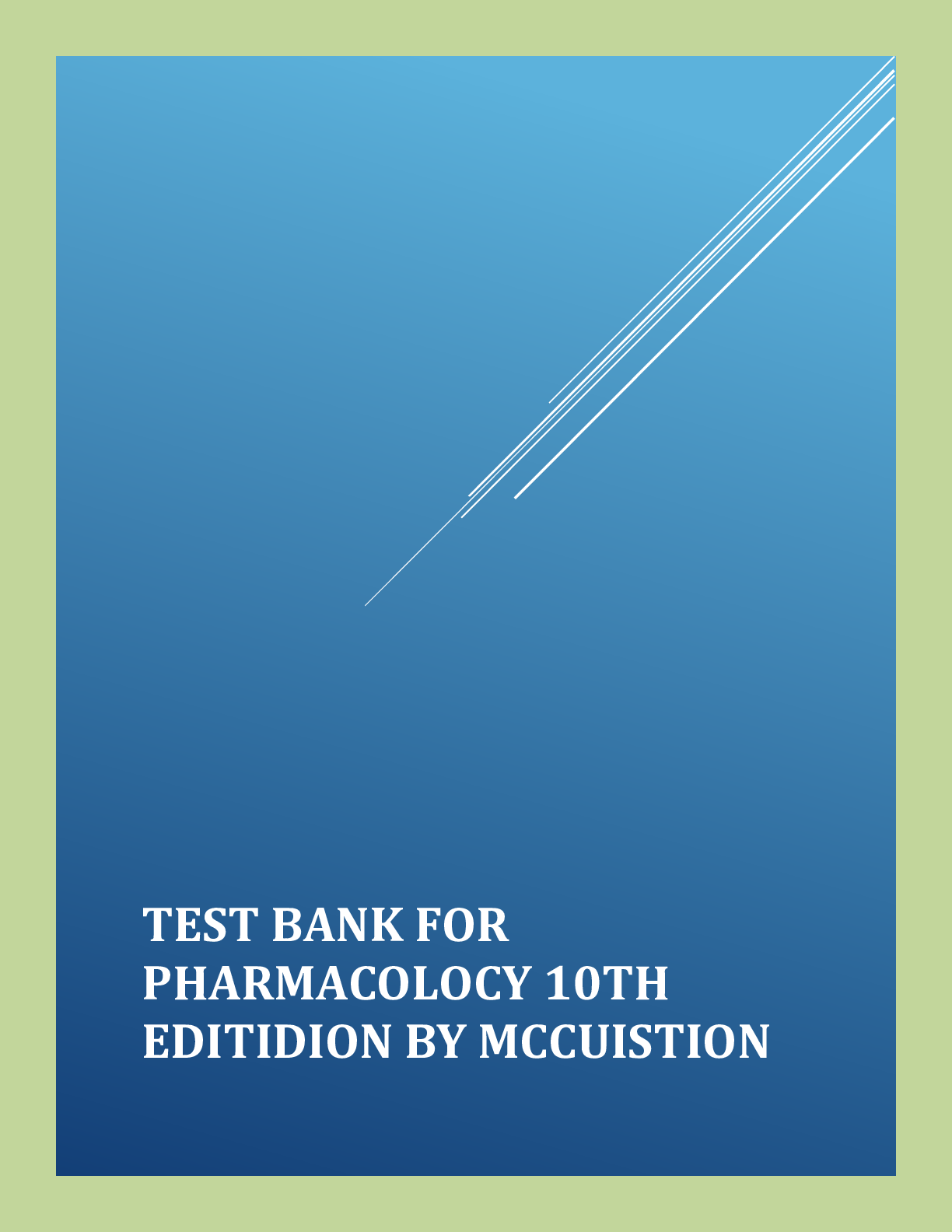
.png)


